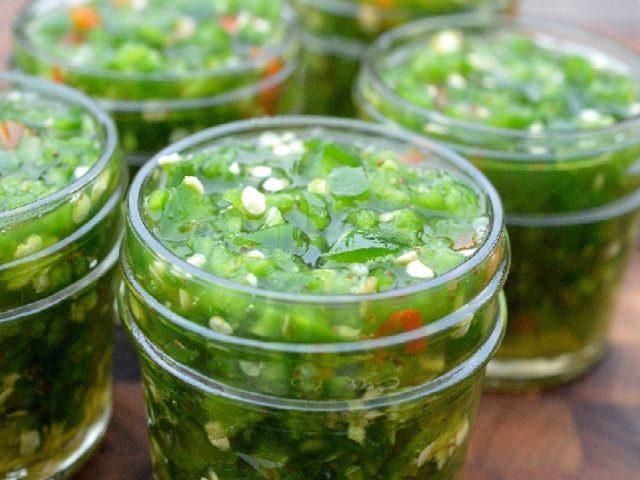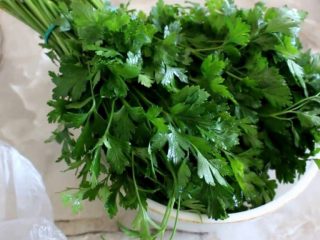Content
Harvesting leaf celery for the winter when there is an abundance of greens on the shelves all year round is completely justified. It’s hard not to agree that all the vegetables, fruits, berries and herbs, tried out of season, did not leave behind any delight. In addition, the presence of vitamins and nutrients in them is questionable. It is quite natural that every housewife always wants to pamper her family with only healthy crops grown with her own hands.
Beneficial properties of celery leaves
Green leaf celery is a storehouse of vitamins and minerals. The plant is endowed with the unique property of slowing down the aging process. Fragrant greenery has the power to restore water-salt balance, which is valuable for older people.
People with an unstable psycho-emotional state should definitely include celery leaves in their diet and stock up on preparations, as they have a positive effect on the state of the nervous system. Consuming the plant in large portions normalizes blood sugar levels.
The juicy leaf variety is rich in:
- carotene;
- asparagine;
- nicotinic acid;
- tyrosine;
- essential oils;
- microelements;
- vitamins: A, B, K, E, C;
- minerals: potassium, phosphorus, calcium, magnesium, manganese, zinc, iron.
Periodic consumption of leaf celery in salads, first and second courses contributes to the manifestation of the following properties of the plant:
- antiseptic;
- tonic;
- increases the concentration of hemoglobin in the blood;
- laxative;
- stimulates appetite, improves digestion;
- immunostimulating;
- improves blood circulation;
- antioxidant;
- strengthens vascular walls;
- regenerating;
- eliminates allergic manifestations;
- restores blood pressure, valuable for hypertension.
It is worth noting that the leafy plant is valuable for men because it contains androsterone, a male hormone that improves potency. For women, leaf celery is valued for its dietary fiber, which helps burn fat. If you are prone to swelling, the plant should be included in your diet, as the natural component eliminates excess fluid and helps relieve cramps during painful menstruation.
Basic rules for harvesting celery leaves for the winter
It is important not only to grow green beds. It should also be taken into account that in order for the plant to accumulate the maximum amount of valuable substances in the root, stem and leaves, harvesting should begin before flowering begins.
Celery blooms closer to mid-August and you should have time to harvest at the end of June, the beginning of the third summer month. It is at this time that the crop is considered mature, and valuable energy is not spent on flowering.
You can continue to buy bunches of juicy celery from supermarket shelves, but it is worth considering that they are grown in an unnatural way, with the addition of fertilizers and other chemicals for growth and will not bring any benefit. Moreover, those who like to consume the plant in large volumes can provoke unwanted reactions in the body.
How to Preserve Celery Leaves for the Winter
Leaf celery can be stored for the winter without much effort. Adding the product to food saturates any dish with vitamins and microelements. To make supplies for the winter, use one of several proposed methods, and if you want to diversify your diet, do it all at once.
Harvesting methods:
- Drying.
- Freezing.
- Dry pickling.
- Storage without any manipulation.
Each housewife will choose her favorite method.
Drying leaf celery
There is no need to invent anything to dry the harvest. The cut green part is washed, dried and chopped.
Dried plant fragments are poured into a fabric bag or glass container. This is how celery preparation preserves vitamins and essential oils.
You can also dry them in bunches. To do this, wash the cut crown, remove damaged fragments, and tie it up. Hang in a dry room with good air circulation. As an additional option, you can dry the herbs spread out on the table. Since the process is lengthy, it is recommended to cover the greens with gauze.
How to freeze leaf celery for the winter
Today, people are increasingly moving away from conservation, preferring natural methods of preparation. Freezing is a simple and popular way to store crops until harvest again.In this case, the following algorithm of actions is followed:
- green leaves are washed, weedy leaves are removed;
- allow the water to drain;
- crushed;
- placed in ice trays;
- fill with water;
- subjected to low temperatures.
This cube will add a touch of spring during the harsh cold season.
You can also freeze leaf celery for the winter using the dry method. To do this you will need to do the following:
- the greens are sorted out, damaged leaves are removed;
- you can arrange several types of plants;
- wash all the ingredients, let the water drain, and dry a little;
- dill, parsley, celery cut finely;
- poured into plastic containers or bags.
- stored in the freezer.
If not re-frozen after thawing, the product can last until the next harvest, providing it with vitamins and minerals.
How to prepare leaf celery for the winter
You can show your imagination and use other methods of preparing fresh leaf celery in the winter without losing the beneficial components of the plant. There are no useless parts in the plant. Celery can be added to ready-made dishes and prepared on its own as healthy foods. Leaf celery and recipes for its preparation for the winter are in demand today, as it is a source of valuable natural ingredients.
Pickled celery leaves for the winter
Pickled green parts of leaf celery go well with vegetables, sometimes they are combined with fruits and berries.
To prepare leaf celery for the winter according to the recipe you will need:
- leaf celery - 1 kg;
- garlic cloves - 10 pieces;
- bay leaves - 4 pieces;
- peppercorns - 8 pieces.
For the marinade take:
- water - one and a half liters;
- vinegar 9% - 400 ml;
- salt - 100 g;
- sugar - 100 g.
It is important to follow the algorithm of actions.
The green mass of celery is washed and sorted. Garlic and bay leaf are placed at the bottom of a sterilized jar. Cut pieces of leaf celery are compacted tightly on top. The containers are filled with hot marinade and sterilized for 25 minutes. Sealed up hermetically.
Leaf celery seasoning
Spicy celery seasoning is used as a sauce for meat dishes, as a dressing in soups, or as an independent dish.
To prepare you will need:
- green parts of a leafy plant - 500 g;
- green parsley leaves - 500 g;
- garlic - 500 g;
- bell pepper - 1 kg;
- hot pepper - 1 pod;
- tomato paste - 500 g;
- salt - 140 g;
- sugar - 150 g;
- vegetable oil - 150 g.
The algorithm of actions is as follows: all ingredients are passed through a meat grinder, mixed until smooth, and the workpiece is covered with thick plastic lids. Store in a cold cellar at 5 degrees. The output of the finished product is three liter containers or 6 half liter jars.
Leaf celery for the winter, dry salting
Dry salting can be used to preserve large volumes of leaf celery. The product is used as a flavoring additive to various dishes. It is important to consider that a large amount of salt is used to obtain the final result.
To prepare you will need:
- green leaf celery - 1 kg;
- salt - 250 g.
The greens are pre-washed and dried, chopped, mixed to obtain a homogeneous mass and placed in jars. When liquid appears above the surface of the tightly packed grass, the containers are sealed. The workpiece is stored in a cool place, away from light.
Storing fresh green celery leaves
Those who prefer to pamper themselves with fresh bunches of celery all year round dig up the plant along with the roots in the fall. They bury it in an earthen cellar. You can also cut the crown from the root, dry the petioles, wrap it in film, and place it on the refrigerator shelf at +1 temperature.
Following simple recommendations, the greens are stored until spring.
Shelf life
Not everyone has the opportunity to grow greens in their garden beds. When buying celery, pay attention to the following nuances:
- if you press the stem with your finger, the buyer feels elasticity, fresh celery does not press through;
- If you pay attention to the leaf product, then when fresh the leaves are hard and smooth;
- By tapping the stems before purchasing, you can find out whether the plant is edible; empty stems are unsuitable for consumption.
Good quality celery should be intensely green in color, with no signs of yellowing on the leaves. It is worth noting that bunches purchased from store shelves will last for several days, and in a refrigerator - for a decade.
A properly dried plant has a beautiful greenish color, an intense smell and can be stored in a dry room until the next harvest.
If all technological processes are followed, pickled celery can be stored for up to two years at a temperature not exceeding +6 degrees.
Roots buried in the cellar preserve greenery for two months. In new dry polyethylene bags, at 0 - +10 degrees, green leaves are stored for a little more than a quarter without damage. In the refrigerator and at a temperature of +5, the leaf variety can last up to six months.
Conclusion
Harvesting leaf celery for the winter should become an obligatory ritual in the life of every housewife. Celery greens have an intense smell. It is treated differently, but there are dishes without the use of aromatic leaves, which are not fully opened. Eating a little of this plant a day can significantly strengthen the body’s barrier functions, and every woman strives for this when caring for her family. In addition to valuable nutritional qualities, green leaves heal wounds well, treat burns, and restore the integrity of damaged tissues. By preparing an infusion based on a leafy plant, people cleanse the body of the accumulation of toxic compounds, toxins, and free radicals.












